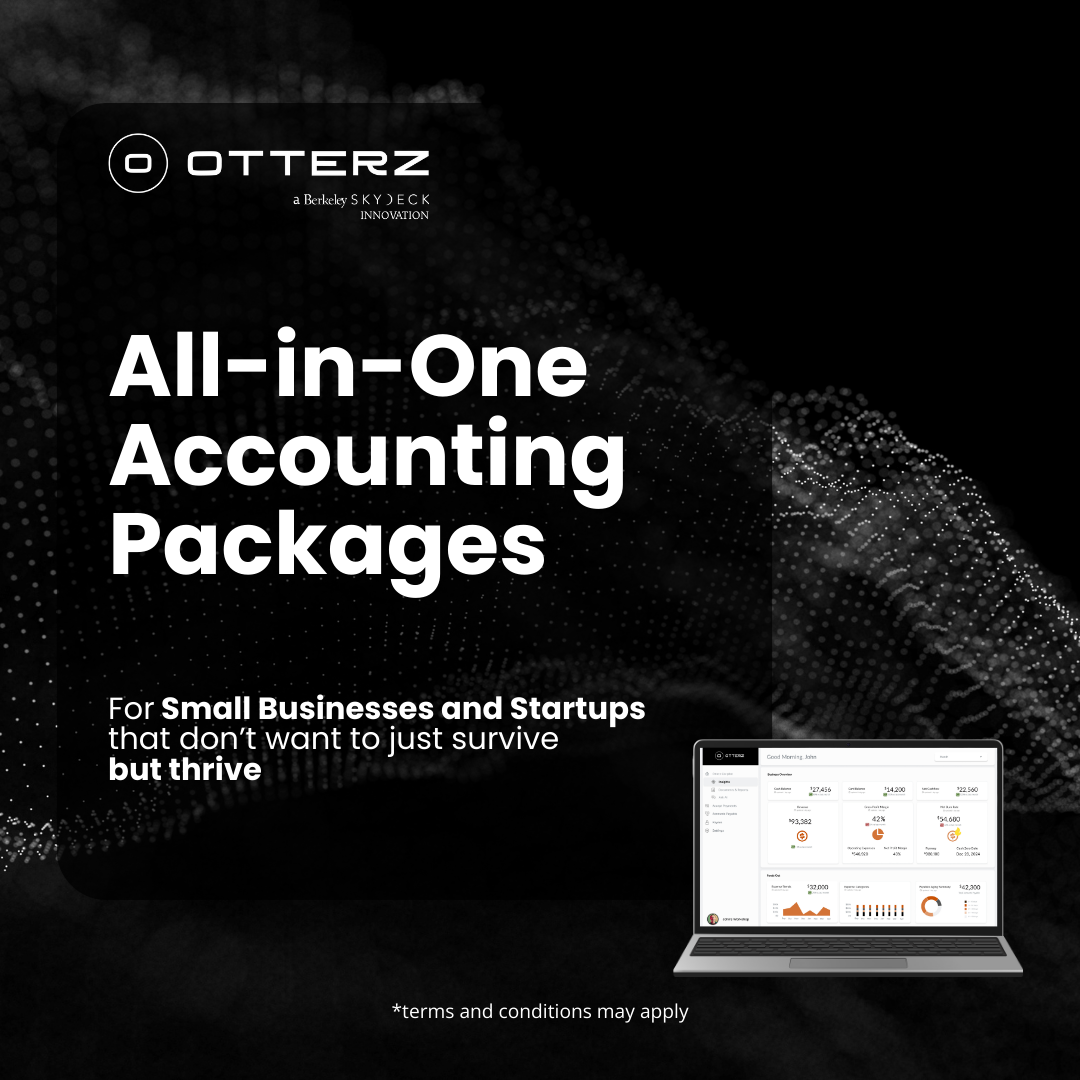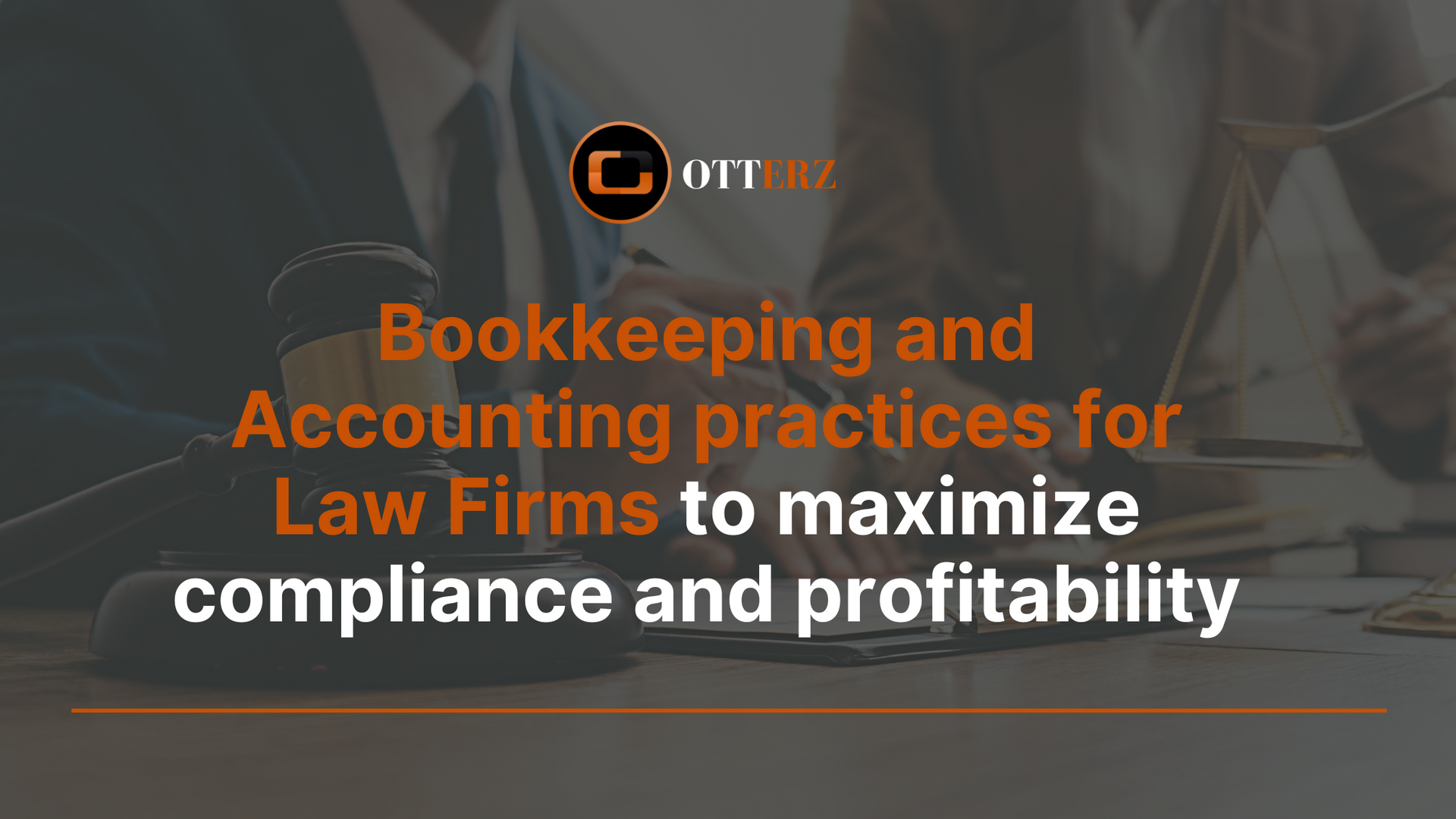U.S. Company Formation Guide: How to Choose the Right Business Entity to Maximize Tax Benefits and Secure Financing
“Someone’s sitting in the shade today because someone planted a tree a long time ago.”
Warren Buffett
In this Article:
- Introduction to U.S. Company Formation
- US Company Registration Process
- Entity Types
- Setting Up a Cap Table
- Entity Conversion
- Tax Strategies and Optimization
- Streamlining Bookkeeping
- Attracting Financing and Investors
- Planning for a Profitable Exit
- Conclusion
1. Introduction
Starting a business in the United States is an exciting venture filled with potential opportunities. However, navigating the complexities of registering your company and selecting the appropriate business entity is crucial for long-term success. Proper registration and entity selection not only influence your legal obligations and tax liabilities but also impact your ability to attract investors, secure financing, and ultimately achieve a profitable exit.
Importance of Proper Registration and Entity Selection
One of the lesser-known yet critical aspects of starting a business is understanding the profound impact that proper registration and entity selection can have on your company’s financial health and operational efficiency. Choosing the right entity type—be it a Sole Proprietorship, Partnership, Limited Liability Company (LLC), or Corporation—affects everything from your tax obligations to your ability to raise capital and expand.
Advanced Strategies for Navigating Tax Complexities
- Utilizing trusts and other complex structures can provide significant tax advantages. Trusts, for instance, can help manage assets, protect against creditors, and ensure smooth succession planning, all while offering potential tax benefits.
- Understanding state-specific tax incentives and credits can also be a game-changer. Many states offer lucrative incentives for businesses in certain industries or those willing to operate in economically distressed areas.
Maximizing Profits and Streamlining Bookkeeping
- Implementing advanced bookkeeping strategies can significantly streamline your financial operations. Leveraging automated accounting software that integrates AI can reduce errors, save time, and provide real-time insights into your financial health.
- Regular financial audits and employing a professional bookkeeper or accountant can help ensure accuracy and compliance, minimizing the risk of costly mistakes and penalties.
Securing Financing and Appealing to Investors
- Structuring your business to be investor-friendly is key. This includes having a clear cap table, demonstrating strong financial health, and showcasing a scalable business model.
- An optimized tax position can make your business more attractive to investors. Highlighting tax-efficient structures and potential savings can be a compelling selling point during fundraising efforts.
Planning for a Profitable Exit
- Early planning for your exit strategy can pay significant dividends. This includes understanding the tax implications of selling your business and structuring the sale to maximize after-tax proceeds.
- Leveraging professional advice from tax consultants and legal experts can help you navigate the complexities of mergers and acquisitions, ensuring a smooth and profitable transition.
In this blog post, we will delve into the specifics of each step in the registration process, explore the different entity types, and provide detailed guidance on setting up a cap table, converting entities, and optimizing your business for financial success. Whether you are a startup founder looking to attract venture capital or a small business owner aiming to expand, this comprehensive guide will equip you with the knowledge and strategies to make informed decisions and drive your business toward growth and profitability.
Next, we'll explore the detailed steps involved in registering a company in the US and what documents you'll need to get started.
2. US Company
Registration Process
Steps to Register a US Company
Registering a company in the United States involves several key steps that lay the foundation for your business’s legal and financial structure. While the process may seem straightforward, understanding and navigating the intricacies can provide significant advantages.
- Choose Your Business Structure:
- Sole Proprietorship, Partnership, LLC, or Corporation: Each entity type has distinct tax implications, liability protections, and administrative requirements. For instance, an LLC offers flexibility and limited liability protection, while a Corporation can attract more investors due to its ability to issue stock.
- Advanced Tip: Consider setting up a trust to hold your business interests. This can provide additional legal protection and potential tax benefits.
- Select a Business Name:
- Ensure your chosen name is unique and complies with state naming requirements. Conduct a name search on your state’s business registry.
- Advanced Tip: Register your business name as a trademark to protect your brand and prevent others from using a similar name.
- Register with State Authorities:
- File the necessary formation documents with the Secretary of State in the state where you plan to operate. For an LLC, this is typically the Articles of Organization; for a Corporation, it’s the Articles of Incorporation.
- Advanced Tip: Some states, like Delaware and Nevada, offer business-friendly environments with favorable tax policies and simplified compliance requirements. Consider incorporating in these states even if you operate elsewhere.
- Obtain an Employer Identification Number (EIN):
- Apply for an EIN from the IRS. This unique identifier is used for tax purposes and is required to open a business bank account, hire employees, and file taxes.
- Advanced Tip: Use your EIN instead of your Social Security number for business-related activities to enhance privacy and reduce the risk of identity theft.
- Register for State and Local Taxes:
- Depending on your location, you may need to register for state and local taxes, including sales tax, unemployment insurance tax, and state income tax.
- Advanced Tip: Take advantage of tax credits and incentives offered by state and local governments to reduce your overall tax burden. For example, some states offer credits for job creation, research and development, and energy efficiency improvements.
- Obtain Necessary Licenses and Permits:
- Determine the federal, state, and local licenses and permits required for your business. This may include health permits, environmental permits, and business licenses.
- Advanced Tip: Use tools like the U.S. Small Business Administration’s (SBA) permit finder to streamline the process of identifying and applying for necessary permits.
Necessary Documents and Requirements
Having the right documents in place is essential for a smooth registration process and ongoing compliance. Here’s what you need:
- Formation Documents:
- Articles of Organization (LLC) or Articles of Incorporation (Corporation): These documents establish your business entity and outline key details such as the business name, address, registered agent, and management structure.
- Advanced Tip: Include clauses that allow for flexibility in management and profit distribution, which can be attractive to investors and beneficial for tax planning.
- Operating Agreement or Bylaws:
- An Operating Agreement (for LLCs) or Bylaws (for Corporations) governs the internal operations of your business. This document outlines the roles and responsibilities of members or directors, decision-making processes, and procedures for adding or removing members.
- Advanced Tip: Draft comprehensive and flexible agreements that can accommodate future growth and changes in ownership. Consider including provisions for handling disputes and succession planning.
- EIN Confirmation Letter:
- The IRS provides a confirmation letter upon issuing your EIN. Keep this document for your records and use it when opening a business bank account and filing taxes.
- Advanced Tip: Store all critical documents digitally and securely to ensure easy access and compliance with record-keeping requirements.
- Licenses and Permits:
- Keep copies of all licenses and permits required for your business operations. This includes federal, state, and local permits.
- Advanced Tip: Regularly review and renew your licenses and permits to avoid penalties and interruptions in business operations.
By carefully navigating the registration process and ensuring all necessary documents are in order, you set a solid foundation for your business. Leveraging advanced strategies, such as utilizing trusts and taking advantage of state-specific tax incentives, can further optimize your business operations and enhance your potential for growth and profitability.
In the next section, we’ll explore the different types of business entities in more detail, helping you choose the one that best suits your needs and goals.
3.
Entity
Types
Choosing the right business entity is one of the most critical decisions you'll make when starting a company in the United States. Each entity type comes with its own set of benefits and drawbacks, affecting everything from tax obligations to investor appeal. This section explores the various entity types, highlighting lesser-known facts, tips, and strategies to help you make an informed decision.
Sole Proprietorship
A Sole Proprietorship is the simplest and most common form of business entity. It is owned and operated by a single individual, with no distinction between the owner and the business.
Pros:
- Easy and inexpensive to set up.
- Complete control over business decisions.
Cons:
- Unlimited personal liability for business debts.
- Difficult to raise capital.
Advanced Tips:
- Tax Strategies: Sole proprietors can take advantage of the home office deduction and other business expense deductions to minimize tax liabilities.
- Trusts: Setting up a revocable living trust can help manage business assets and plan for succession, offering some protection and control over the business.
Partnership
A Partnership involves two or more people who share ownership of a business. There are different types of partnerships, including General Partnerships (GP) and Limited Partnerships (LP).
Pros:
- Simple to establish and operate.
- Combined skills and resources of multiple partners.
Cons:
- Shared liability among partners.
- Potential for conflicts between partners.
Advanced Tips:
- Partnership Agreement: Draft a comprehensive partnership agreement outlining roles, responsibilities, profit-sharing, and dispute resolution mechanisms to avoid conflicts.
- Tax Strategies:
Partnerships can benefit from pass-through taxation, where profits are taxed at the individual partners' income tax rates, potentially lowering the overall tax burden.
Limited Liability Company (LLC)
An LLC combines the liability protection of a corporation with the tax benefits and flexibility of a partnership. It is a popular choice for many small and medium-sized businesses.
Pros:
- Limited liability protection for owners (members).
- Flexible management structure.
- Pass-through taxation.
Cons:
- More paperwork and fees compared to a sole proprietorship or partnership.
- State-specific regulations can vary.
Advanced Tips:
- Series LLC: Some states allow the formation of Series LLCs, which offer liability protection across multiple "series" or divisions within the same LLC, each treated as a separate entity for liability purposes.
- Tax Strategies:
Consider electing S-Corp tax status for your LLC to potentially reduce self-employment taxes.
Corporation (C-Corp and S-Corp)
Corporations are separate legal entities that provide the strongest protection against personal liability for their owners. There are two main types: C-Corporations and S-Corporations.
C-Corporation (C-Corp):
- Pros:
- Unlimited growth potential through the sale of stock.
- Ability to attract investors and venture capital.
- Cons:
- Subject to double taxation (corporate income taxed at the corporate level and dividends taxed at the shareholder level).
S-Corporation (S-Corp):
- Pros:
- Pass-through taxation, avoiding double taxation.
- Limited liability protection.
- Cons:
- Restrictions on the number and type of shareholders.
Advanced Tips:
- Trusts and Estate Planning: Incorporate trusts in your corporate structure to manage and protect assets, provide for succession planning, and optimize estate taxes.
- Preferred Stock: Issue preferred stock to attract investors by offering dividends and liquidation preferences over common stockholders.
Trusts and Complex Structures
Trusts and complex business structures can offer significant advantages for asset protection, tax planning, and succession.
Types of Trusts:
- Revocable Living Trusts: Allow the grantor to retain control over assets during their lifetime while providing a seamless transition of ownership upon death.
- Irrevocable Trusts: Remove assets from the grantor's taxable estate, offering potential tax benefits and protection from creditors.
Complex Structures:
- Holding Companies: Create a holding company to own and manage multiple subsidiaries, providing liability protection and potential tax advantages through strategic asset allocation and income splitting.
- Family Limited Partnerships (FLP): Use FLPs for estate planning, allowing family members to share ownership and management of family-owned businesses while minimizing estate and gift taxes.
Advanced Tips:
- Asset Protection: Utilize offshore trusts and international business entities to protect assets from litigation and creditors.
- Tax Optimization: Leverage complex structures like FLPs and holding companies to optimize tax positions, attract investors, and enhance the overall financial health of your business.
In conclusion, selecting the right entity type involves careful consideration of your business goals, financial situation, and long-term plans. By understanding the nuances of each entity type and utilizing advanced strategies, you can navigate tax complexities, maximize profits, streamline operations, and position your business for success. Next, we'll explore how to set up a cap table and manage ownership interests effectively.
4.
Setting Up a Cap Table
A cap table, short for capitalization table, is a detailed spreadsheet or table that outlines the ownership structure of a company. It includes information about the company's shareholders, the amount of equity they own, and the value of their equity. Setting up a cap table is crucial for managing ownership stakes, attracting investors, and planning for future growth.
Importance of a Cap Table
A well-maintained cap table is vital for several reasons:
- Investor Appeal: A clear and detailed cap table helps potential investors understand the ownership structure and their potential return on investment. It demonstrates transparency and organized management, which are attractive traits for investors.
- Tax Planning: Accurate tracking of equity can help in tax planning, ensuring that you optimize your tax positions and comply with regulations.
- Legal Compliance: Maintaining a cap table helps ensure compliance with securities laws and regulations, reducing the risk of legal issues.
- Exit Strategy: When planning for a profitable exit, a comprehensive cap table provides a clear picture of equity distribution, facilitating smoother transactions and negotiations.
Steps to Create a Cap Table
- List All Equity Holders:
- Start by listing all equity holders, including founders, employees, investors, and other stakeholders. Include details such as names, contact information, and the type of equity they hold (e.g., common stock, preferred stock, options, warrants).
- Advanced Tip: Use different classes of stock (e.g., Class A, Class B) to offer varied rights and privileges, which can be useful for attracting investors while retaining control.
- Record Equity Issuances:
- Document each issuance of equity, noting the number of shares or units issued, the date of issuance, the price per share, and any applicable vesting schedules or restrictions.
- Advanced Tip: Implement vesting schedules with cliffs and acceleration clauses to incentivize key employees and protect the company in the event of an acquisition or merger.
- Track Changes Over Time:
- Continuously update the cap table to reflect any changes, such as new issuances, transfers, conversions, or buybacks of equity.
- Advanced Tip: Regularly reconcile the cap table with financial statements and legal documents to ensure accuracy and consistency.
- Include Valuation Information:
- Incorporate valuation details, such as the company's current valuation, the price per share in each financing round, and the implied dilution for existing shareholders.
- Advanced Tip: Use 409A valuations to determine the fair market value of your company's common stock, which is essential for setting option exercise prices and minimizing tax liabilities.
Tools and Software for Cap Table Management
Managing a cap table manually can be complex and time-consuming. Fortunately, several tools and software solutions can streamline the process:
- Carta:
- Carta is a popular platform that simplifies cap table management, equity issuance, and compliance. It offers features like automated 409A valuations, scenario modeling, and real-time updates.
- Advanced Tip: Use Carta's scenario modeling to simulate the impact of future financing rounds, exits, and other events on your cap table, helping you make informed strategic decisions.
- Gust Equity Management:
- Gust provides a comprehensive suite of tools for cap table management, including equity tracking, investor relations, and legal document storage. It is particularly useful for startups and small businesses.
- Advanced Tip: Leverage Gust's investor dashboard to keep shareholders informed and engaged, enhancing investor relations and support.
- Captable.io:
- Captable.io offers a free and intuitive platform for creating and managing cap tables. It provides features like scenario analysis, pro forma modeling, and detailed reporting.
- Advanced Tip: Use Captable.io's pro forma modeling to plan and evaluate different financing scenarios, optimizing your equity structure for growth and investor appeal.
- Shareworks by Morgan Stanley:
- Shareworks is a sophisticated platform that caters to larger companies with complex equity structures. It provides advanced features like global equity management, financial reporting, and compliance tracking.
- Advanced Tip: Utilize Shareworks' global equity management capabilities to manage international equity plans and navigate cross-border tax and regulatory complexities.
By setting up a detailed and accurate cap table, you can effectively manage your company's equity, attract investors, and plan for future growth. Leveraging advanced strategies and tools will not only streamline the process but also provide valuable insights to optimize your business operations and financial health. In the next section, we’ll discuss the process of converting different types of business entities and the benefits of doing so.
5. Entity Conversion
Converting your business entity can be a strategic move to optimize your operations, enhance tax efficiency, and attract investors. This section explores the processes and benefits of flipping an external entity to a US LLC and converting an LLC to an external entity, providing advanced strategies to navigate these transitions effectively.
Flipping an External Entity to a US LLC
Converting a foreign company to a US LLC can provide significant advantages, such as gaining access to US markets, benefiting from favorable tax regulations, and enhancing your appeal to US investors.
Steps to Flip an External Entity to a US LLC:
- Evaluate Legal and Tax Implications:
- Consult with legal and tax professionals to understand the implications of converting your foreign entity to a US LLC. This includes analyzing potential tax liabilities, regulatory requirements, and the impact on existing contracts and operations.
- Advanced Tip: Consider establishing a Delaware LLC, as Delaware offers favorable laws for business operations and is widely recognized for its business-friendly environment.
- Register the US LLC:
- Choose a unique name for your LLC and file the necessary formation documents (Articles of Organization) with the state’s Secretary of State. Appoint a registered agent to receive legal documents on behalf of the LLC.
- Advanced Tip: Utilize a reputable registered agent service that offers compliance monitoring and document management to streamline your administrative tasks.
- Transfer Assets and Liabilities:
- Transfer the assets and liabilities of the foreign entity to the newly formed US LLC. This may involve reassigning contracts, transferring intellectual property, and consolidating financial accounts.
- Advanced Tip: Use a trust to hold the assets of the foreign entity during the transition. This can provide additional legal protection and tax planning opportunities.
- Update Governance and Compliance:
- Draft an Operating Agreement for the US LLC, outlining the management structure, roles, and responsibilities of members. Ensure compliance with US regulations and reporting requirements.
- Advanced Tip: Incorporate flexible governance provisions in the Operating Agreement to accommodate future growth and changes in ownership.
- Notify Stakeholders:
- Inform stakeholders, including customers, suppliers, and employees, about the conversion. Update your legal documents, marketing materials, and online presence to reflect the new business structure.
- Advanced Tip: Leverage this transition to rebrand and relaunch your business, capitalizing on the new opportunities provided by the US market.
Converting an LLC to an External Entity
Expanding your US-based LLC to an international market can help diversify your operations, access new customer bases, and optimize tax positions through global structuring.
Steps to Convert an LLC to an External Entity:
- Research Target Market:
- Conduct thorough research on the target market, including legal, tax, and regulatory requirements. Identify the most favorable jurisdictions for your business operations.
- Advanced Tip: Consider countries with strong bilateral treaties with the US, as these can provide tax benefits and reduce regulatory hurdles.
- Establish the Foreign Entity:
- Register the foreign entity in the target jurisdiction, complying with local formation requirements. This typically involves filing formation documents, appointing local directors, and obtaining necessary licenses and permits.
- Advanced Tip: Use an offshore trust or holding company to manage the foreign entity. This can provide tax advantages and protect your assets from potential legal risks.
- Transfer Operations and Assets:
- Transfer the operations and assets of the US LLC to the foreign entity. This includes reassigning contracts, transferring intellectual property, and setting up local bank accounts.
- Advanced Tip: Structure the transfer to minimize tax liabilities. For example, use intercompany loans or asset sales to optimize the tax impact of the transfer.
- Update Corporate Governance:
- Adapt your governance structure to comply with local laws. Draft new governing documents, such as bylaws or an operating agreement, that align with the regulations of the target jurisdiction.
- Advanced Tip: Implement a dual-board structure with local and US-based directors to maintain control and ensure effective oversight.
- Implement Tax and Compliance Strategies:
- Develop tax and compliance strategies to optimize your global tax position. This includes transfer pricing policies, tax treaties, and compliance with international reporting standards.
- Advanced Tip: Use advanced tax planning techniques, such as profit shifting and hybrid entity structures, to reduce your global tax burden and enhance profitability.
By strategically converting your business entity, you can optimize your operations, improve your tax position, and enhance your appeal to investors. Leveraging advanced strategies, such as using trusts and holding companies, can provide additional benefits and protection. In the next section, we will discuss tax strategies and optimization techniques to further enhance your business’s financial health and attractiveness to investors.
6.
Tax
Strategies and Optimization
Navigating the complexities of the US tax system is essential for maximizing your company’s profitability and appeal to investors. Employing
advanced tax strategies and leveraging complex structures can significantly
reduce your tax liabilities, streamline your financial operations, and enhance your business’s overall value. This section will explore lesser-known tax strategies, the use of trusts and complex structures for tax efficiency, and methods for maximizing profits while minimizing tax liabilities.
Lesser-Known Tax Strategies
- Section 1202 Qualified Small Business Stock (QSBS):
- If your company qualifies as a small business corporation under Section 1202, shareholders may be eligible for significant capital gains tax exclusions on the sale of their stock. This can provide substantial tax savings upon exit.
- Advanced Tip: Ensure your corporation meets the QSBS requirements, such as being a C-Corporation and holding assets below $50 million. Hold the stock for at least five years to qualify for the exclusion.
- R&D Tax Credits:
- Companies engaged in research and development activities can claim R&D tax credits, which directly reduce their tax liability. These credits are available at both federal and state levels.
- Advanced Tip: Thoroughly document all R&D activities and expenses to maximize the credit. Consider hiring a specialist to ensure you capture all eligible costs.
- Cost Segregation Studies:
- For companies that own real estate, a cost segregation study can reclassify certain building costs as personal property, allowing for accelerated depreciation and immediate tax deductions.
- Advanced Tip: Engage a qualified cost segregation professional to conduct the study and identify all potential reclassification opportunities.
- Opportunity Zones:
- Investing in Qualified Opportunity Zones can provide tax incentives, including deferral of capital gains and potential exclusion of gains from Opportunity Zone investments.
- Advanced Tip:
Identify and invest in Opportunity Zone funds that align with your business strategy, and hold investments for the required period to maximize tax benefits.
- Revocable and Irrevocable Trusts:
- Trusts can be powerful tools for managing business assets, planning for succession, and optimizing taxes. Revocable trusts allow for control during the grantor's lifetime, while irrevocable trusts offer more significant tax benefits and asset protection.
- Advanced Tip: Use irrevocable trusts to remove assets from your taxable estate, potentially reducing estate taxes and protecting assets from creditors.
- Family Limited Partnerships (FLPs):
- FLPs allow family members to share ownership of a business while maintaining control within the family. They can also provide substantial tax benefits, such as valuation discounts for gift and estate tax purposes.
- Advanced Tip: Structure FLPs to take advantage of minority interest and lack of marketability discounts, thereby reducing the taxable value of transferred interests.
- Holding Companies:
- Establishing a holding company can centralize control of multiple subsidiaries, streamline operations, and optimize tax positions through strategic allocation of income and expenses.
- Advanced Tip: Use a holding company to manage intellectual property and other high-value assets, potentially relocating these assets to low-tax jurisdictions to minimize tax liabilities.
- Offshore Trusts and Entities:
- Offshore trusts and entities can provide additional tax planning opportunities and asset protection. Properly structured, they can defer or reduce taxes on foreign income and gains.
- Advanced Tip:
Ensure compliance with US tax laws, including the Foreign Account Tax Compliance Act (FATCA) and the Controlled Foreign Corporation (CFC) rules, to avoid penalties and legal issues.
Maximizing Profits and Minimizing Tax Liabilities
- Tax Deferral and Acceleration Strategies:
- Timing income and deductions strategically can defer tax liabilities and optimize cash flow. For example, accelerating deductions and deferring income recognition can reduce current year taxes.
- Advanced Tip: Use strategies like bonus depreciation and Section 179 expensing to immediately write off the cost of qualified assets, reducing taxable income in the year of acquisition.
- Income Splitting:
- Splitting income among family members in lower tax brackets can reduce the overall tax burden. This can be achieved through salaries, dividends, or ownership interests in family-owned businesses.
- Advanced Tip: Ensure compliance with IRS rules regarding reasonable compensation and the assignment of income doctrine to avoid issues.
- Retirement Plans and Employee Benefits:
- Offering retirement plans (e.g., 401(k), SEP IRA) and employee benefits can provide tax deductions for the business while attracting and retaining talent.
- Advanced Tip: Implement a defined benefit plan for higher contributions and larger tax deductions, particularly beneficial for highly compensated owners.
- Charitable Contributions:
- Donating to qualified charities can provide tax deductions while supporting causes important to you and your business.
- Advanced Tip: Consider donating appreciated securities or property instead of cash to maximize the tax benefits, as this can avoid capital gains taxes on the donated assets.
By leveraging these advanced tax strategies and utilizing trusts and complex structures, you can navigate tax complexities, maximize profits, streamline bookkeeping, secure financing, and optimize your business’s tax position to appeal to investors. Implementing these strategies will not only enhance your financial health but also position your business for long-term success and a profitable exit. In the next section, we will explore how to streamline bookkeeping to further improve your business operations and financial management.
7. Streamlining Bookkeeping
Effective bookkeeping is essential for any business, ensuring financial accuracy, regulatory compliance, and informed decision-making. Streamlining your
bookkeeping processes can save time, reduce errors, and provide valuable insights that enhance profitability and investor appeal. This section explores efficient bookkeeping practices and how Otterz can help you achieve these goals using our expertise, dedicated accountants, and advanced AI technology.
Vital for Business Growth
Efficient Bookkeeping Practices
- Automate Routine Tasks:
- Automating routine bookkeeping tasks can significantly reduce the time and effort required for financial management. This includes invoicing, expense tracking, payroll processing, and bank reconciliation.
- Advanced Tip: Use cloud-based accounting software that integrates with your bank accounts and other financial systems to automatically import transactions and categorize expenses. This reduces manual data entry and ensures real-time updates.
- Regular Reconciliation:
- Regular reconciliation of bank statements, credit card statements, and accounts receivable/payable ensures that your financial records are accurate and up-to-date.
- Advanced Tip: Set up automated reconciliation processes within your accounting software to flag discrepancies and prompt timely reviews. This helps catch errors early and maintain accurate records.
- Implement a Chart of Accounts:
- A well-organized chart of accounts categorizes all financial transactions, making it easier to track income, expenses, assets, and liabilities.
- Advanced Tip: Customize your chart of accounts to reflect your specific business needs and industry standards. Regularly review and update the chart to ensure it remains relevant and accurate.
- Maintain Detailed Records:
- Keeping detailed and organized records of all financial transactions is crucial for accurate bookkeeping and regulatory compliance.
- Advanced Tip: Digitize all receipts and invoices using scanning apps or software, and store them in a secure, cloud-based system. This makes it easier to retrieve records for audits or financial reviews.
- Use Financial Dashboards:
- Financial dashboards provide real-time insights into your company’s financial health, helping you monitor key metrics such as cash flow, profitability, and budget variances.
- Advanced Tip:
Customize dashboards to display the most critical metrics for your business. Regularly review these dashboards to make informed decisions and identify potential issues early.
How Otterz Can Help Streamline Your
Bookkeeping
At Otterz, we understand the challenges businesses face in maintaining accurate and efficient bookkeeping. Our expertise, combined with our advanced AI technology (Nyra - the World's 1st AI Accountant), offers comprehensive solutions to streamline your bookkeeping processes. Here’s how we can help:
- Comprehensive Bookkeeping Services:
- We provide end-to-end bookkeeping services, including transaction categorization, expense tracking, and financial reporting. Our dedicated accountants ensure that your books are always accurate and up-to-date.
- Service Highlight: We offer a free initial audit of your books when you first sign up with us, identifying any issues and areas for improvement.
- Catch-Up Bookkeeping, Reclassification, and Reconciliation:
- If your books are behind or incomplete, our team can quickly get you back on track. We specialize in catch-up bookkeeping, reclassification, and reconciliation, ensuring that your financial records are accurate and compliant. After our free initial audit, we will reclassify and categorize transactions to better optimize and improve your financial records, enhancing overall accuracy and compliance.
- Advanced Financial Management Platform:
- Our platform provides 24/7 insights, projections, and analysis of your financial data, giving you access to detailed and accurate information at your fingertips. This ensures that financial management is more efficient and helps in making informed decisions.
- Service Highlight: With real-time data and projections, you can better manage cash flow, plan for future growth, and optimize your financial strategies based on highly accurate data ensured by our bookkeeping services.
- Dedicated Support:
- Our dedicated accountants work closely with you to understand your business needs and provide personalized support. Whether you need help with day-to-day bookkeeping or complex financial planning, we are here to assist.
- Service Highlight: We offer ongoing support and regular financial reviews to ensure that your bookkeeping remains accurate and efficient, allowing you to focus on growing your business.
Streamlining your bookkeeping with Otterz not only saves time and reduces errors but also provides you with the financial clarity needed to navigate tax complexities, maximize profits, and appeal to investors. By leveraging our advanced financial management platform and expert services, you can optimize your tax position, enhance your financial management, and position your business for long-term success and a profitable exit.
In the next section, we’ll explore strategies for attracting financing and investors, helping you secure the capital needed for growth and expansion.
8. Attracting Financing and Investors
- Choose the Right Entity Type:
- Investors typically prefer entities that offer limited liability and clear governance structures, such as C-Corporations or LLCs. These entities provide protection against personal liability and facilitate easier transfer of ownership.
- Advanced Tip: Consider incorporating in Delaware, known for its business-friendly laws and established legal precedents, which can provide additional reassurance to investors.
- Develop a Clear Cap Table:
- A transparent and well-organized cap table (capitalization table) is essential for attracting investors. It provides a clear picture of ownership distribution, equity dilution, and potential returns on investment.
- Advanced Tip: Regularly update your cap table and use specialized software to ensure accuracy and transparency, which can enhance investor confidence.
- Create a Strong Management Team:
- Investors look for businesses with experienced and capable management teams. Highlighting the expertise and track records of your team members can significantly boost investor confidence.
- Advanced Tip: Establish an advisory board with industry experts and experienced entrepreneurs to provide strategic guidance and further enhance your business's credibility.
- Protect Intellectual Property:
- Secure and protect your intellectual property (IP) through patents, trademarks, and copyrights. Demonstrating strong IP protection can make your business more attractive to investors by showcasing unique value and competitive advantage.
- Advanced Tip: Conduct regular IP audits to ensure all innovations are adequately protected and explore international patents if you plan to operate globally.
- Prepare Detailed Financial Projections:
- Investors want to see realistic and detailed financial projections that demonstrate growth potential and profitability. Include projected revenue, expenses, cash flow, and break-even analysis.
- Advanced Tip:
Use scenario planning to show how different business strategies and market conditions could impact your financial outcomes, providing a comprehensive view of potential risks and rewards.
Tax Positioning for Investor Appeal
- Utilize Tax Credits and Incentives:
- Take advantage of available tax credits and incentives, such as the R&D tax credit, which can reduce your tax liability and improve your financial position.
- Advanced Tip: Work with a tax advisor to identify all applicable credits and incentives and ensure you meet the necessary criteria to claim them.
- Implement a Tax-Efficient Structure:
- Structuring your business for tax efficiency can enhance your appeal to investors. This might involve using a combination of entity types, such as LLCs and S-Corporations, to optimize tax benefits.
- Advanced Tip: Consider establishing a holding company to manage subsidiary operations and intellectual property, potentially reducing overall tax liabilities through strategic allocation of income and expenses.
- Leverage Trusts and Complex Structures:
- Trusts and other complex structures can provide significant tax advantages and asset protection, making your business more attractive to investors.
- Advanced Tip: Use grantor retained annuity trusts (GRATs) or other advanced trust structures to transfer ownership interests tax-efficiently, which can be particularly beneficial for succession planning and wealth preservation.
- Minimize Double Taxation:
- Double taxation, where income is taxed at both the corporate and personal levels, can be a concern for investors. Structuring your business to minimize this burden can make it more appealing.
- Advanced Tip: Elect S-Corporation status for eligible entities to benefit from pass-through taxation, avoiding corporate-level taxes and potentially reducing overall tax liabilities.
- Prepare for Due Diligence:
- Investors will conduct thorough due diligence before committing funds. Ensure your financial records, tax filings, and legal documents are organized and readily accessible.
- Advanced Tip: Conduct a pre-investment audit to identify and address any potential issues that could arise during due diligence, presenting a clean and attractive opportunity to investors.
By strategically structuring your business and optimizing your tax position, you can enhance your appeal to investors and secure the financing needed for growth and expansion. Leveraging advanced strategies, such as using trusts and taking advantage of tax credits, can provide significant advantages and improve your business's overall financial health. In the next section, we will discuss planning for a profitable exit, ensuring you maximize returns when it's time to sell or transfer your business.
9. Planning for a Profitable Exit
Planning for a profitable exit is an essential component of your business strategy. Whether you intend to sell your company, merge with another business, or transfer ownership, a well-thought-out exit plan can maximize your returns and ensure a smooth transition. This section covers strategies for a successful exit and explores the tax implications and optimization techniques that can enhance your financial outcomes.
Strategies for a Successful Exit
- Define Your Exit Goals:
- Clearly articulate your exit goals, whether they involve maximizing sale price, ensuring business continuity, or achieving personal financial security. Understanding your objectives will guide your exit strategy and decision-making process.
- Advanced Tip: Regularly revisit and update your exit goals as your business evolves and market conditions change.
- Enhance Business Value:
- Focus on increasing the value of your business by improving operational efficiency, expanding market reach, and strengthening financial performance. A higher valuation can lead to a more lucrative exit.
- Advanced Tip: Implement a robust management information system (MIS) to track key performance indicators (KPIs) and demonstrate growth potential to potential buyers.
- Identify Potential Buyers:
- Identify and approach potential buyers, including strategic acquirers, private equity firms, and competitors. Understanding the motivations and needs of different buyer types can help you tailor your pitch and negotiations.
- Advanced Tip: Engage a professional business broker or M&A advisor to identify potential buyers and manage the sale process, ensuring you secure the best possible deal.
- Prepare for Due Diligence:
- Comprehensive due diligence is a critical part of the exit process. Ensure your financial records, legal documents, and operational procedures are well-documented and organized.
- Advanced Tip: Conduct a pre-due diligence audit to identify and address any issues that could arise during the buyer’s due diligence process, presenting a clean and attractive opportunity.
- Negotiate Favorable Terms:
- Negotiating favorable terms involves more than just the sale price. Consider factors such as payment structure, transition support, and post-sale involvement.
- Advanced Tip: Structure the deal to include earn-outs or performance-based payments, aligning the buyer’s and seller’s interests and potentially increasing the overall sale value.
Tax Implications and Optimization for Exits
- Understand Tax Liabilities:
- Different exit strategies have varying tax implications. Selling assets versus selling stock, for instance, can result in different tax treatments. Understanding these implications is crucial for optimizing your tax position.
- Advanced Tip: Consult with a tax advisor early in the planning process to understand the specific tax liabilities associated with your chosen exit strategy and identify opportunities for tax savings.
- Utilize Trusts and Estate Planning:
- Trusts can play a significant role in exit planning by providing tax advantages and facilitating the transfer of ownership. For example, a grantor retained annuity trust (GRAT) can help transfer wealth to heirs while minimizing estate taxes.
- Advanced Tip: Establish an irrevocable trust to hold business interests. This can protect assets from creditors and reduce the taxable estate, providing significant tax savings upon exit.
- Optimize Capital Gains Tax:
- The sale of a business often triggers capital gains tax. Strategies such as long-term capital gains treatment and Qualified Small Business Stock (QSBS) exclusions can reduce this tax burden.
- Advanced Tip: If your stock qualifies as QSBS, you may be eligible for substantial exclusions on capital gains taxes if the stock is held for at least five years. Ensure your corporation meets QSBS requirements to take advantage of this benefit.
- Leverage Tax-Deferred Strategies:
- Tax-deferred strategies, such as 1031 exchanges and installment sales, can spread out tax liabilities and provide cash flow benefits.
- Advanced Tip: Consider structuring the sale as an installment sale, receiving payments over time rather than a lump sum. This can spread out the capital gains tax liability and potentially lower your overall tax rate.
- Plan for Post-Exit Wealth Management:
- Effective wealth management post-exit is crucial to preserve and grow the proceeds from the sale. This involves strategic investment planning, tax-efficient wealth transfer, and philanthropic giving.
- Advanced Tip: Establish a family office or engage a wealth management firm to manage your post-exit finances, ensuring a coordinated approach to investment, estate planning, and philanthropy.
By implementing these strategies and optimizing your tax position, you can maximize the financial benefits of your business exit. Planning ahead and leveraging advanced techniques, such as the use of trusts and tax-deferred structures, will help ensure a smooth and profitable transition. In the next section, we will conclude by summarizing key points and providing final tips for business owners.
10. Conclusion
Navigating the complexities of registering a US company and choosing the right business entity is crucial for setting a strong foundation for your business. Throughout this blog post, we've explored various advanced strategies and lesser-known tips to help you optimize your business operations, streamline bookkeeping, secure financing, attract investors, and plan for a profitable exit. Here’s a recap of the key points and some final tips for business owners.
Recap of Key Points
- Proper Registration and Entity Selection:
- Choosing the right business entity—whether it's a Sole Proprietorship, Partnership, LLC, or Corporation—affects your legal obligations, tax liabilities, and ability to raise capital.
- Advanced strategies, such as utilizing trusts and taking advantage of state-specific tax incentives, can offer significant benefits.
- Registration Process:
- Following the steps to register your company, from choosing a business name to obtaining necessary licenses and permits, ensures compliance and lays a solid foundation.
- Leveraging advanced tips, like setting up a trust to hold your business interests or incorporating in business-friendly states, can provide additional protection and tax benefits.
- Entity Types:
- Each entity type has its pros and cons. Understanding these can help you make an informed decision that aligns with your business goals.
- Advanced strategies, such as using Series LLCs or incorporating preferred stock in your corporate structure, can enhance flexibility and investor appeal.
- Setting Up a Cap Table:
- A well-maintained cap table is essential for managing ownership stakes and attracting investors.
- Using specialized software and regularly updating your cap table can ensure accuracy and transparency.
- Entity Conversion:
- Converting your business entity can optimize operations, improve tax positions, and attract investors.
- Advanced strategies, such as using trusts to hold assets during transitions or establishing offshore entities, can provide additional benefits.
- Tax Strategies and Optimization:
- Employing lesser-known tax strategies, such as Section 1202 QSBS and R&D tax credits, can significantly reduce tax liabilities.
- Trusts and complex structures can enhance tax efficiency and protect assets.
- Streamlining Bookkeeping:
- Efficient bookkeeping practices are vital for financial accuracy and regulatory compliance.
- Otterz can help streamline your bookkeeping with comprehensive services, an advanced financial management platform, and dedicated support.
- Attracting Financing and Investors:
- Structuring your business to be investor-friendly and optimizing your tax position can enhance your appeal to potential investors.
- Leveraging advanced strategies, such as using trusts and taking advantage of tax credits, can provide significant advantages.
- Planning for a Profitable Exit:
- A well-planned exit strategy can maximize returns and ensure a smooth transition.
- Understanding tax implications and utilizing advanced techniques, such as tax-deferred strategies and trusts, can enhance your financial outcomes.
Final Tips for Business Owners
- Plan Ahead:
- Start planning your business structure, tax strategies, and exit strategy early. This proactive approach can help you navigate complexities and seize opportunities effectively.
- Consult Professionals:
- Engage with legal, tax, and financial professionals to gain expert advice tailored to your business needs. Their insights can help you optimize operations and avoid costly mistakes.
- Stay Flexible:
- The business landscape is constantly evolving. Be prepared to adapt your strategies and structures to changing market conditions, regulatory requirements, and business goals.
- Leverage Technology:
- Use advanced tools and software to streamline operations, enhance accuracy, and gain real-time insights into your financial health. This can improve decision-making and operational efficiency.
- Regularly Review and Update:
- Continuously review and update your business strategies, financial plans, and operational processes to ensure they remain aligned with your goals and market dynamics.
By incorporating these advanced strategies and tips, you can position your business for long-term success, maximize profits, and achieve a profitable exit. Whether you are a startup founder or a small business owner, the right approach can help you navigate the complexities of the US business landscape and drive growth and expansion.
How
Otterz Can Help
At Otterz, we understand the unique challenges businesses face at every stage of their growth journey. Whether you’re just starting out, securing your first round of funding, or managing the complexities of a growing enterprise, our comprehensive suite of services is designed to meet your needs and help you succeed.
- Comprehensive Bookkeeping Services
Our end-to-end bookkeeping services include transaction categorization, expense tracking, and financial reporting. We ensure your financial records are always accurate and up-to-date, allowing you to focus on growing your business.
- Advanced Financial Management Platform
Otterz’s advanced financial management platform provides 24/7 insights, projections, and analysis of your financial data. With our AI-driven platform, you gain access to real-time data and projections, enabling more accurate and efficient financial management and informed decision-making.
- Dedicated Accountant Support
Our dedicated accountants work closely with you to understand your business needs and provide personalized support. Whether you require assistance with day-to-day bookkeeping or complex financial planning, our team is here to help.
- Invoice Management and Payroll Support
Managing invoices and payroll can be time-consuming and complex. Otterz offers comprehensive invoice management and payroll support to ensure timely payments and compliance with all payroll regulations. Our services help you maintain accurate records and reduce administrative burdens.
We specialize in optimizing your tax position, leveraging available credits and incentives to minimize liabilities. Our services ensure compliance and strategic tax planning, enhancing your financial health and investor appeal.
If your books are behind or incomplete, our team can quickly get you back on track. We offer catch-up bookkeeping, reclassification, and reconciliation, ensuring your financial records are accurate and compliant. After our free initial audit, we reclassify and categorize transactions to optimize and improve your financial records.
- Fundraising Support
Otterz assists you in preparing for investors, whether they are venture capitalists, angel investors, or other funding sources. We help you develop a clear and compelling financial story, create detailed financial projections, and ensure your financial records and cap table are investor-ready.
Our AI technology, trained on your entire financial data, offers unparalleled insights into your business operations. This advanced analysis helps you better understand your financial health, streamline processes, and make data-driven decisions.
No matter your situation—whether you’re an existing company, planning to register a new entity, or navigating the stages from pre-seed to Series A, B, C funding—Otterz is here to support you. For small businesses looking to organize or improve their
tax position,
catch up on bookkeeping, or gain deeper insights into their operations, our comprehensive services provide the solutions you need.
Sources:
Boolkah - Business Exit Strategy. Available at: https://boolkah.com/business-exit-strategy/ (Accessed: 8 June 2024).
NerdWallet - Business Entity. Available at: https://www.nerdwallet.com/article/small-business/business-entity (Accessed: 8 June 2024).
About the Authors:

Ektaa Shah
CPA & Taxation Expert
Ektaa is a Certified Public Accountant with a Master’s in Taxation, driven by a wealth of expertise and a commitment to excellence. Demonstrating dedication to academic and professional achievement, Ektaa has gained valuable experience across diverse industries, including professional service firms, life sciences and consumer goods. Serving as a tax specialist on audits and serving as a tax advisor for small to medium sized-businesses, she developed a deep understanding of complex tax issues. Beyond her professional endeavors, Ektaa is actively involved in community service and leadership. She proudly serves as the Treasurer on the Board of Directors for the non-profit organization Womanspace, demonstrating her commitment to giving back and empowering others.

Daniel Ionescu
Marketing Expert
Daniel is an Experienced Marketing Expert deeply passionate about financial technologies, startups, and small business growth. He is dedicated to empowering startups and small businesses through insightful content and innovative tools designed to enhance financial management and operational efficiency. Daniel is committed to delivering valuable, tech-driven solutions to entrepreneurs and business owners.
Found this valuable? Share it with your friends and colleagues!










